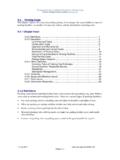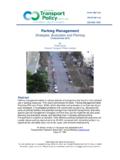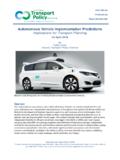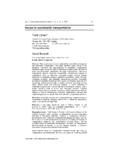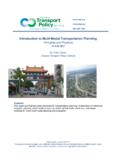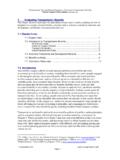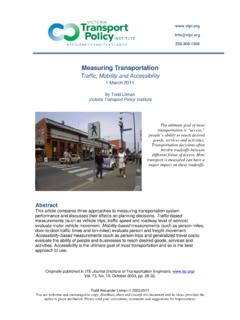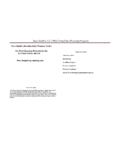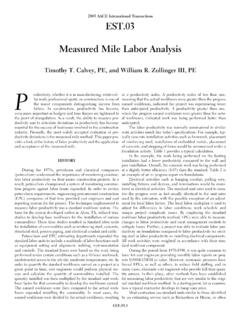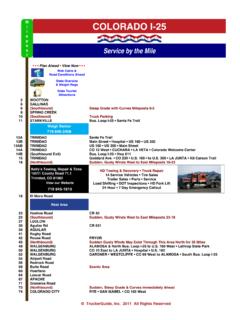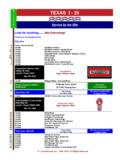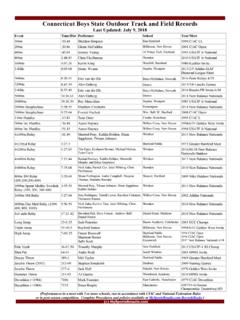Transcription of Transportation Cost Analysis - Vehicle Costs
1 Transportation cost and Benefit Analysis II Vehicle Costs victoria transport Policy Institute ( ) 2 January 2017 Page Vehicle Costs This chapter examines direct financial Costs of Vehicle use. These are divided into fixed Costs , which are unaffected by mileage, and variable Costs , which increase with mileage. This indicates the savings from Transportation improvements that allow consumers to reduce their Vehicle ownership and use. Note: monetary units are in 2007 dollars unless indicated otherwise. Index Vehicle Costs .. 1 Definitions and Perspectives .. 1 Discussion .. 2 Variation in Fixed and Variable Costs .
2 2 Vehicle Ownership .. 2 Driving Conditions .. 2 cost Trends and Future Uncertainty .. 4 Automobile cost Estimates .. 4 Other Automobile cost Issues .. 10 Hybrid and Electric 10 Rideshare Passengers .. 10 Motorcycles .. 10 Transit .. 10 Bicycling, Walking and Telecommuting .. 11 Telework .. 12 Comparison of Vehicle Costs .. 12 Equity and Efficiency Issues .. 13 Conclusions .. 13 Information Resources by Subject .. 15 Bibliography Vehicle Costs .. 15 Definitions and Perspectives Vehicle Costs include direct user expenses to own and use private vehicles (plus incremental Costs for mobility substitutes such as telework). These indicate the savings that result from reduced Vehicle ownership and use.
3 Vehicle Costs can be measured in various ways, including per Vehicle -mile, passenger-mile, Vehicle -year, household-year, producing different results. These can be divided into fixed (also called ownership or time-based, which are unaffected by the amount a Vehicle is driven) and variable (also called operating, marginal or incremental, which increase with Vehicle mileage). Some Costs that are often categorized as fixed, such as depreciation and insurance, actually increase with Vehicle mileage, as discussed below. Private cars are usually depreciated over a 10 year period, buses over 20 years, and trains over 30 to 40 years. Fixed Costs Variable Costs Vehicle purchase or lease Insurance Registration and Vehicle taxes Maintenance and repair Fuel, fuel taxes and oil Paid parking and tolls Transportation cost and Benefit Analysis II Vehicle Costs victoria transport Policy Institute ( ) 2 January 2017 Page Discussion Variation in Fixed and Variable Costs Some Costs usually categorized as fixed are actually partly variable; they increase to some degree with Vehicle use, and decline when Vehicle travel is reduced.
4 Depreciation, insurance and parking are partly variable since increased driving increases the frequency of repairs and replacement, reduces Vehicle resale value, and increases the risks of crashes, traffic and parking citations. Used Vehicle price guides ( and ) indicate that mileage-related depreciation is typically about $ between 50,000 and 100,000 miles on a five-year old car, and much higher for low-mileage newer Similarly, maintenance Costs for older vehicles depend greatly on distance driven. Vehicle leases often have excessive mileage charges averaging about 10 per mile (typically over 15,000 annual miles). Vehicle Ownership Consumers can often achieve considerable savings by reducing Vehicle ownership.
5 For example, if improved transport options (better walking and cycling conditions or public transit services) allow 10% of households to avoid purchasing a second car, the savings average $200-400 annually per household (assuming $2,000 to $4,000 in annual savings per Vehicle ). Cumulative savings can be large. A study by McCann found that households in communities with better transit services and more accessible land use patterns spend less than $5,500 annually on Transportation while residents of more automobile dependent regions spend more than $8,500 annually on transportation2. See section below for more information on automobile ownership marginal Costs . Driving Conditions Vehicle operating Costs per mile vary depending on driving patterns and conditions.
6 Fuel consumption per Vehicle -mile tends to increase at speeds over 55 mph, under 20 mph, and under stop-and-go driving conditions (Energy and Emission Reductions).3 Vehicle operating Costs are about 40% higher on urban arterials than highways, and Costs increase proportional to travel time when congestion reduces traffic speed to 30 mph on a highway or 20 mph on an arterial (see discussion in Chapter ).4 Roadway investment models provide detailed Vehicle cost estimates (fuel, oil and tires, and sometimes maintenance) or various Vehicle classes and road They are designed to predict the Vehicle cost savings resulting from roadway improvements. 1 Art Ludwig (2002), Understatement of Auto Operation Costs by AAA ( ); at 2 Barbara McCann (2000), Driven to Spend; The Impact of Sprawl on Household Transportation Expenses, Surface Transportation Policy Project ( ).
7 Values not adjusted for inflation. 3 ORNL, Transportation Energy Book, Oak Ridge National Laboratories, Department of Energy ( ), updated annually. 4 Kenneth Small (1992) Urban Transportation Economics, Harwood (Chur) p. 76. 5 TransFund (1998), Project Evaluation Manual, TransFund New Zealand ( ); TTI (1997), MicroBENCOST, Texas Transportation Institute ( ); Earl Klaubert (2001), Highway Effects on Vehicle Performance, Turner-Fairbank Highway Research Center, FHWA, FHWA-RD-00-164 ( ). Transportation cost and Benefit Analysis II Vehicle Costs victoria transport Policy Institute ( ) 2 January 2017 Page Vehicle Costs can vary depending on Vehicle type, travel conditions, and market factors such as fuel taxes and Vehicle and parking fees.
8 Analyses vary in the scope of Costs they consider. For example, when estimating automobile commuting Costs , and therefore the savings from improvements to alternative modes and commute trip reduction programs, many calculators only consider fuel and parking Costs . Few consider the higher fuel and maintenance Costs for driving under congested, urban-peak conditions. Some consider maintenance and tire replacement Costs , and a few consider mileage-based depreciation (the incremental decline in the value of a Vehicle , or its future operating life, with increased Vehicle travel). Fixed and external Costs are often ignored. As a result, the full Costs of driving, and therefore the full benefits of Vehicle travel reductions, tend to be higher than many estimates indicate.
9 Table summarizes various user cost categories. Table Vehicle Costs Categories Category Description Typical Values Vehicle operating Costs Fuel, oil and tire wear. 15-20 per Vehicle -mile. Higher under congested conditions. Other distance-based Costs Distance-based maintenance and depreciation, mileage lease fees, additional crash and citation risk Costs . 10-20 per Vehicle -mile. Special fees Parking fees and road tolls. Varies. Vehicle ownership Costs Time-based depreciation, financing, insurance, registration fees and taxes. $3,000-5,000 per Vehicle -year. Residential parking Residential parking Costs . $200-2,000 per Vehicle -year. Automobiles involve various types of Costs . Different types of Analysis consider different types of Costs .
10 Formatted: Bullets and NumberingTransportation cost and Benefit Analysis II Vehicle Costs victoria transport Policy Institute ( ) 2 January 2017 Page cost Trends Real (inflation-admusted) automobile Costs declined between 1970 and 1985, but have tended to increased since 1985. Fuel prices are expected to incease in the long-run due to rising demand and declining production (called peak oil), as discussed in Chapter Automobile cost Estimates Table Automobile cost Estimate Summary Table Selected Sources Publication Costs cost Value 2007 USD NCTR (2008) Shift in Household Transportation Spending Marginal cost savings in USA from a shift to transit from private automobiles in 2006.
